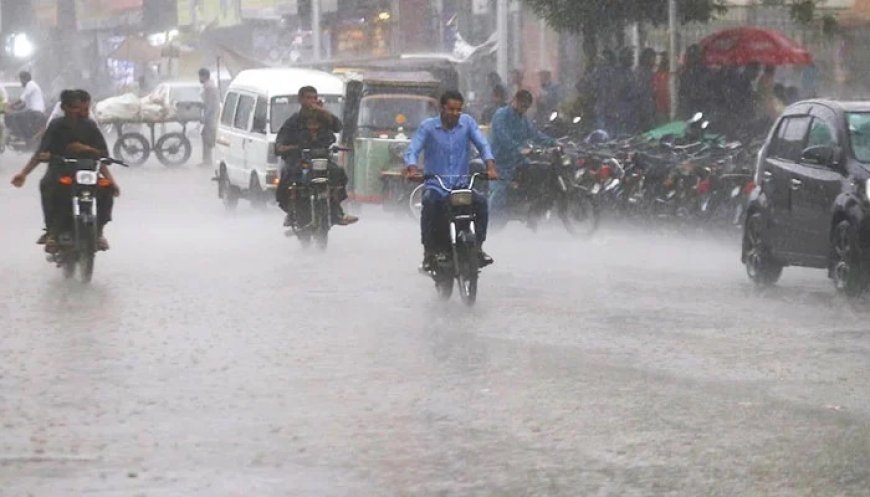PMD Forecasts Nationwide Rain Starting Tomorrow

1.
The Pakistan Meteorological Department (PMD) has announced that rains are expected across various parts of the country starting from June 26, providing much-needed relief from the intense heat.
According to the PMD, a low-pressure system in southern Indian Gujarat and monsoon winds from the Arabian Sea and Bay of Bengal will bring rain to eastern parts of Pakistan on June 26. Anticipated areas include Umarkot, Badin, Thatta, and Karachi in Sindh.
Karachi, the country's financial hub, may also experience rainfall from July 2 to July 3, as per the Met Office's statement. Various parts of Sindh are likely to witness showers until July 1.
This forecast follows a period of extreme temperatures in Karachi, where the mercury recently reached 42°C, with a "feels like" temperature of 51°C.
Moreover, rains are expected from June 27 to July 1 in Islamabad, Rawalpindi, Lahore, and other cities. Bahawalpur, Multan, Khanewal, Rajanpur, and Rahim Yar Khan are forecasted to receive rainfall from June 26 to June 30.
In addition, rain is predicted in Khyber Pakhtunkhwa, Gilgit Baltistan, and Azad Jammu and Kashmir between June 28 and July 1. Various cities in Balochistan, including Lasbela, Khuzdar, Awaran, Barkhan, and Naseerabad, may experience showers from June 26 to 28.
The PMD's rain outlook follows an alert from the National Disaster Management Authority (NDMA) about potential flash floods and landslides due to heavy and light rains expected in different parts of the country in July. The forecast warns of moderate to very heavy rains that could lead to flash flooding, urban flooding, landslides in mountainous regions, and potential GLOF (Glacial Lake Outburst Flood) events.
In response to these projections, the NDMA has advised Provincial Disaster Management Authorities (PDMAs), District Disaster Management Authorities (DDMAs), and other relevant agencies to stay vigilant and prepared to respond to any emergencies. It is crucial for authorities to ensure that machinery is pre-positioned and that adequate staff is available in vulnerable areas.
Local authorities are urged to raise awareness among residents living near riverbanks and streams about potential increases in water levels and to facilitate timely evacuation of at-risk populations from low-lying and flood-prone areas as per established evacuation plans.
Furthermore, citizens are advised to take extreme precautions, including avoiding electric poles and unstable infrastructure, and refraining from driving or walking through flooded areas.

















































